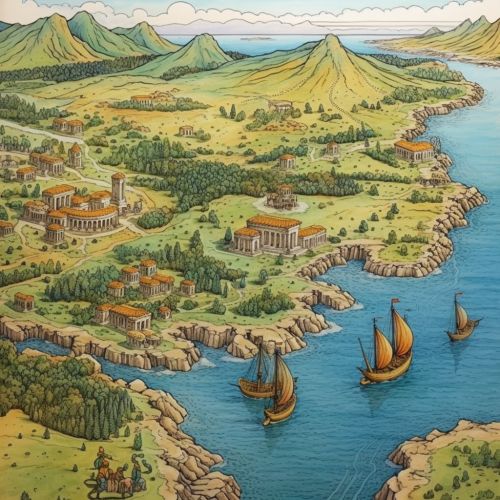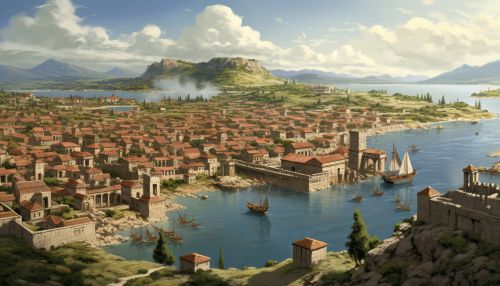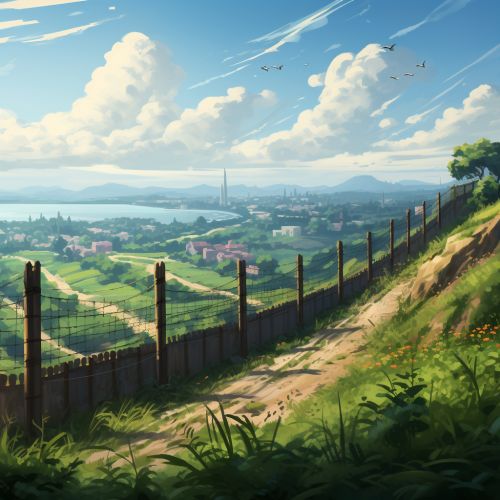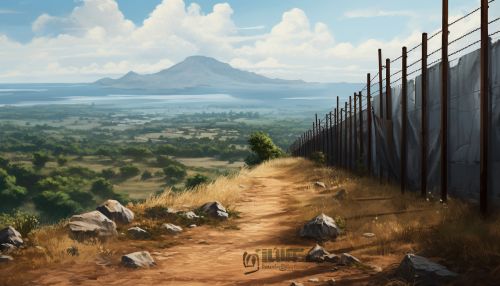Political geography
Introduction
Political geography is a subfield of geography that studies the spatial distribution of political processes and how these processes are impacted by their geographical environment. It involves the study of both the spatially uneven outcomes of political processes and the ways in which political processes are themselves affected by spatial structures. The field has undergone significant evolution and expansion since its inception, incorporating a wide range of methodologies and theoretical frameworks.
Historical Overview
The study of political geography can be traced back to ancient civilizations. The Greeks, for instance, were known to have a keen interest in the political organization of space, with philosophers like Plato and Aristotle offering insights into the relationship between geography and political structures. However, it was not until the 19th century that political geography emerged as a distinct academic discipline, largely in response to the geopolitical concerns of European states.


In the early 20th century, political geography was heavily influenced by the work of Friedrich Ratzel, a German geographer who developed the concept of Lebensraum or 'living space'. This concept, which suggested that a state's political power was directly related to its territorial extent, had a profound impact on geopolitical thinking at the time.
The mid-20th century saw a shift in the focus of political geography, with the advent of the behavioral revolution in the social sciences. This led to a greater emphasis on the role of individual behavior and decision-making processes in shaping political outcomes. The field also began to incorporate insights from other disciplines, such as sociology, economics, and psychology.
In recent years, political geography has continued to evolve, with a growing emphasis on issues such as globalization, environmental politics, and the politics of identity. The field has also seen a rise in the use of advanced spatial analysis techniques, such as Geographic Information Systems (GIS), in its research methods.
Concepts and Theories
Political geography encompasses a wide range of concepts and theories, many of which are shared with other disciplines within the social sciences. Some of the key concepts in the field include:
Territory
In political geography, territory refers to a defined area, including land, air, and sea, over which a political unit, such as a state, has control. The concept of territory is central to many geopolitical theories and is often linked to notions of sovereignty, control, and identity.
State
The state is a key concept in political geography. It refers to a political unit that has a centralized government and has sovereignty over a defined territory. States are the primary actors in international politics and their interactions shape the global geopolitical landscape.
Nation
A nation is a group of people who share a common identity, often based on factors such as language, culture, or ethnicity. The concept of the nation is closely related to that of the state, but the two are not synonymous. A nation-state, for instance, is a state in which the political boundaries coincide with the boundaries of a single nation.
Borders
Borders are geographical boundaries that delineate the territory of a state. They can be physical, such as rivers or mountains, or they can be artificial, such as lines drawn on a map. Borders are often sites of conflict and negotiation, and their management is a key concern of political geography.


Geopolitics
Geopolitics is the study of the influence of geographical factors on political decision-making. It involves the analysis of the strategic importance of particular geographical locations or regions to the political objectives of states.
Methodologies
Political geography employs a variety of methodologies in its research. These include both qualitative and quantitative methods, as well as a range of spatial analysis techniques.
Qualitative methods in political geography often involve case studies, interviews, and ethnographic research. These methods are used to gain an in-depth understanding of the ways in which political processes are shaped by and shape geographical spaces.
Quantitative methods, on the other hand, involve the use of statistical analysis to examine patterns and trends in political phenomena. These methods are often used in conjunction with spatial analysis techniques, such as GIS, which allow for the visualization and analysis of spatial data.
Current Trends and Issues
Political geography is a dynamic field that continually evolves in response to changing political and geographical realities. Some of the current trends and issues in the field include:
Globalization
The process of globalization, characterized by the increasing interconnectedness of political, economic, and cultural processes across geographical boundaries, has had a profound impact on political geography. It has led to new forms of political organization and conflict, and has challenged traditional notions of territory, state, and nation.
Environmental Politics
The politics of the environment, including issues such as climate change, resource management, and environmental justice, are increasingly central to the study of political geography. These issues often involve complex interactions between political, economic, and ecological processes, and require a spatially informed analysis.
Identity Politics
The politics of identity, including issues related to race, ethnicity, gender, and sexuality, are an important focus of contemporary political geography. These issues often involve the exploration of the ways in which identities are constructed and contested in specific geographical contexts.


See Also
- Geopolitics
- Territory (political)
- State (polity)
- Nation
- Borders
- Globalization
- Environmental Politics
- Identity Politics
